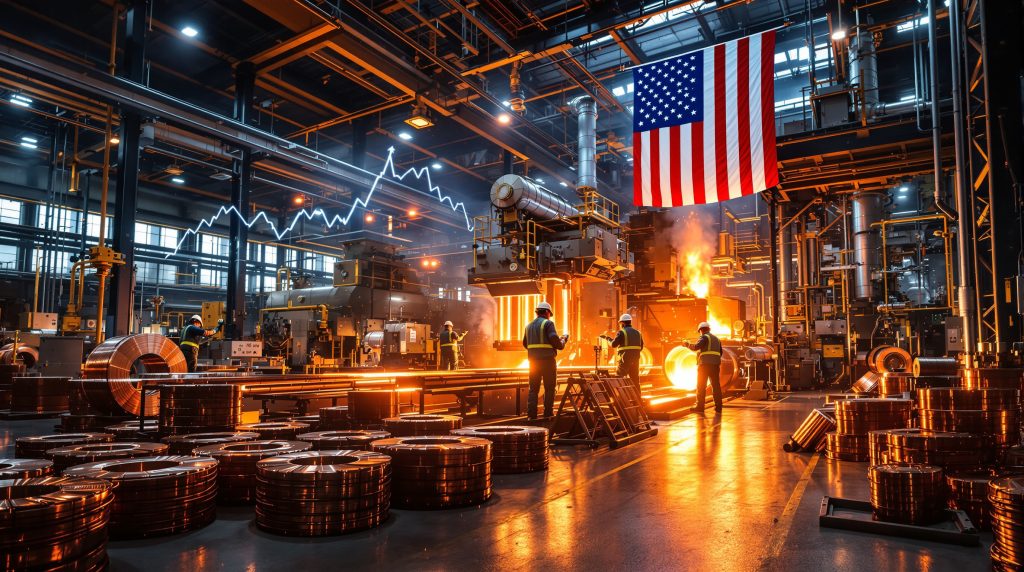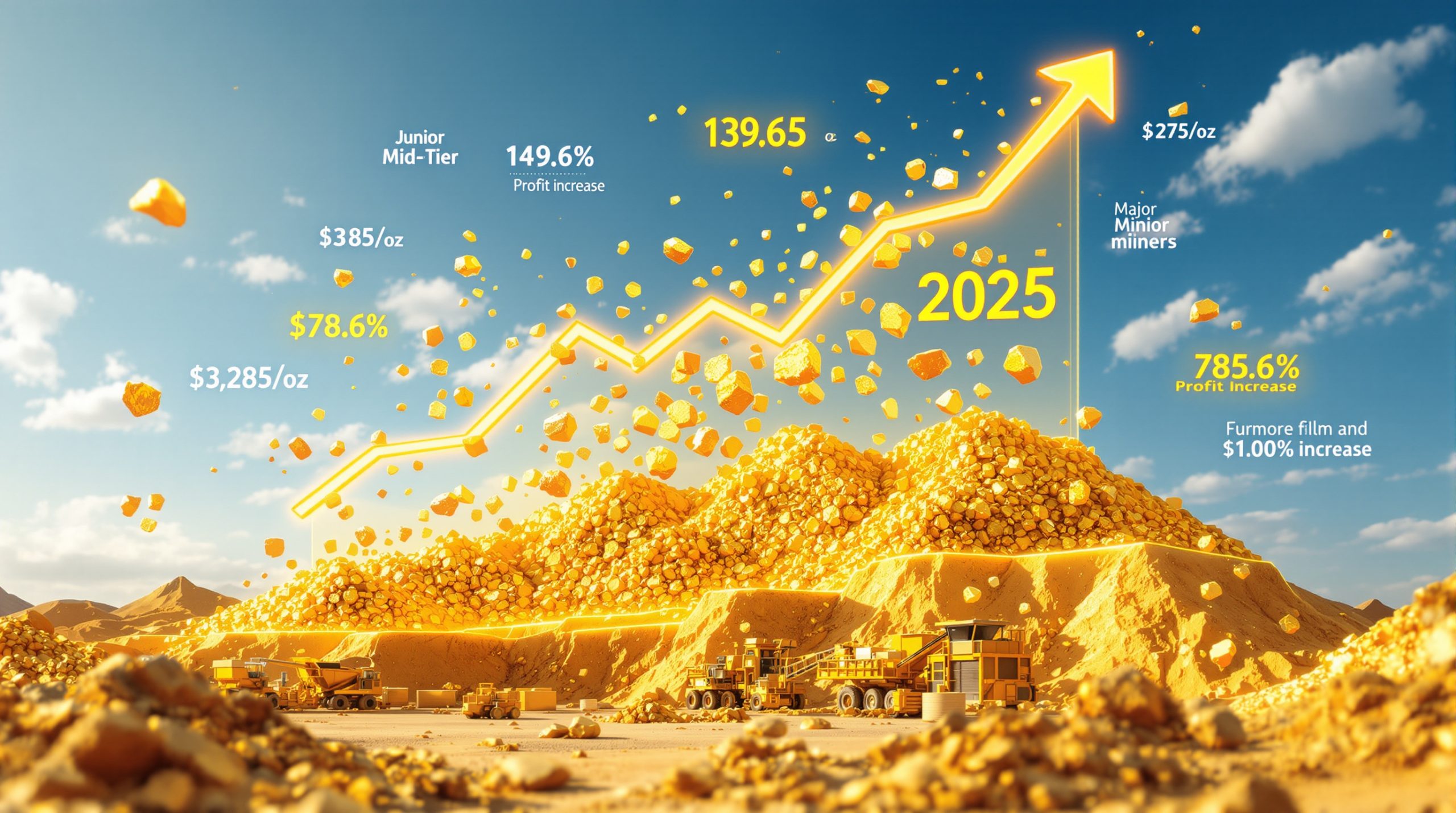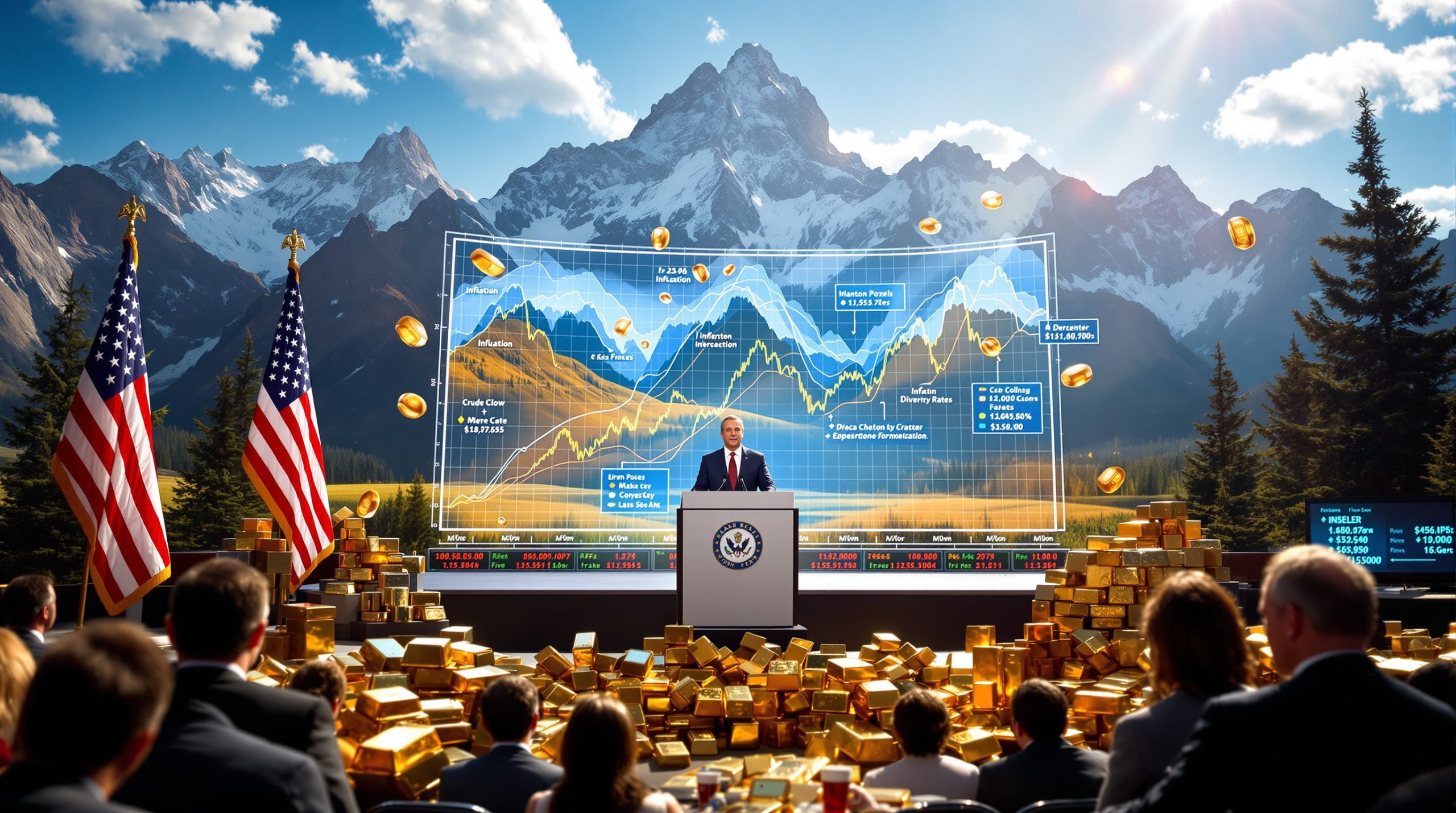US Copper Firms Hike Prices Despite Trump's Tariff Reprieve
The copper market in the United States is experiencing a puzzling trend: despite refined copper being exempted from recent tariffs, prices for copper products continue to rise. This contradictory situation reflects the complex dynamics of supply chains, manufacturing capacity, and the nuanced implementation of trade policies that are reshaping America's industrial landscape.
Current Price Movements in the US Copper Sector
Major US wire producers have implemented significant price increases despite raw copper being exempted from tariffs. Southwire Co. LLC and Cerro Wire LLC, two of America's dominant copper wire manufacturers, recently announced a 5% price hike across their copper wire products. This comes at a time when refined copper is trading at approximately $4.43/lb, down 1.14% in recent market activity.
The producer price index for copper wire and cable reached a record high in July 2025, rising 12% compared to the previous year. This significant jump occurred despite the exemption of unprocessed refined copper from the administration's 50% tariff policy—highlighting a growing disconnect between raw material costs and finished product prices.
As Aisling Hubert, senior wire and cable analyst at CRU Group, explains: "While wire and cable prices are influenced by copper prices, they are not the same. The margin between the two can widen if local producers have more pricing power."
Market Response to Trump's Tariff Decision
The copper industry was caught by surprise when the administration announced that unprocessed refined copper would be exempt from the sweeping 50% tariffs impact on copper imposed on various imported metals. However, this exemption does not extend to manufactured copper products, including wires, cables, and semi-processed goods, which remain subject to the full tariff.
The selective application of tariffs has created a unique market dynamic. US copper processing companies are emerging as the primary beneficiaries of this policy shift, gaining unprecedented pricing power despite decreases in raw material costs. With foreign competitors effectively priced out of the market by the 50% tariff on finished products, domestic manufacturers can command premium prices for their goods.
This situation illustrates how targeted trade policies can create unintended consequences throughout supply chains, ultimately affecting downstream industries and consumers.
Why Are Copper Prices Rising Despite Raw Material Exemptions?
Structural Factors Driving Price Increases
Several structural factors are contributing to rising copper product prices in the US market:
- Limited domestic processing capacity creating bottlenecks in the supply chain
- Reduced competition from international suppliers who now face prohibitive 50% tariffs on finished products
- Enhanced pricing power for established US-based producers like Southwire and Cerrowire
- Widening margin between raw copper prices and finished product costs as domestic manufacturers capitalize on reduced competition
The tariff policy has effectively insulated domestic producers from international competition, allowing them to increase their profit margins even as raw material costs remain stable or decline. This has created an unusual situation where consumer prices rise despite stable or decreasing input costs.
"The tariff means that US producers will have the upper hand in price negotiations with their customers," notes Hubert from CRU Group, highlighting how the market dynamics have shifted in favor of domestic manufacturers.
Import Dependency and Market Constraints
The United States relies heavily on imports to meet its copper needs. According to US Geological Survey data, the country imports approximately 810,000 tons of unprocessed copper annually, accounting for 45% of the nation's 1.8 million ton consumption.
For finished products, the dependency is also significant. In 2024, about 23% of US cable demand was met through imports—products that are now subject to the 50% tariff. This represents approximately $15 billion worth of copper-containing goods affected by the new trade policy.
The reality is that domestic manufacturing capacity cannot quickly scale to replace these imports. As CRU Group's Hubert points out, cable imports would be "difficult to replace in the short term," creating supply constraints that further drive up prices.
Who Benefits From the Current Copper Market Structure?
Primary Corporate Beneficiaries
The clear winners in the current market structure are established US-based manufacturers with domestic processing facilities:
- Southwire Co. LLC – recognized as one of America's largest copper wire and cable producers
- Cerro Wire LLC – a significant wiremaker owned by Berkshire Hathaway Inc.
- Prysmian SpA – a global cable manufacturer with substantial US operations that dominates the US wire and cable market alongside Southwire
These companies have the existing infrastructure and capacity to meet domestic demand without significant international competition, allowing them to capitalize on the favorable policy environment.
Industry Executive Perspectives
Industry leaders have been forthright about the benefits they expect from the current market conditions. Massimo Battaini, CEO of Prysmian SpA, stated during an earnings call that "Local producers, like we are, will benefit from cost of cables imported from overseas much higher than today. So this will certainly benefit our guidance, our forecast for the full year."
This candid assessment confirms what market analysts have observed: companies with established US manufacturing presence are poised for higher profit margins and improved financial performance as a direct result of the tariff policy.
Industry analysts note that domestic producers now have "the upper hand in price negotiations" with their customers, a position that translates directly to stronger financial performance and pricing power.
What Are the Economic Implications of Copper Tariff Policies?
Consumer Impact Assessment
The ripple effects of higher copper product prices will be felt across multiple industries, ultimately reaching end consumers:
- Inflationary pressure on construction and electrical sectors
- Higher costs for electrical infrastructure in commercial and residential projects
- Price increases for consumer goods containing copper components
- Budget strains for infrastructure and development projects
Peter Schmitz, director of global copper markets research at Wood Mackenzie, offers a sobering assessment: "Is it inflationary? Yes it is. Ultimately somebody pays; that is going to be the American consumer."
Schmitz further elaborates that "copper accounted for about two-thirds of the cost of a cable and 20%-30% of the cost of an electrical motor," demonstrating how significant copper price increases can be for finished products. These increased costs will inevitably be passed along to end users, despite the exemption of raw copper from tariffs.
Long-Term Market Adjustments
The market is expected to undergo several adaptations in response to the new tariff landscape:
- Increased domestic manufacturing investment to expand processing capacity
- Supply chain restructuring to minimize tariff impacts
- Strategic stockpiling of key materials by major consumers
- Exploration of alternative materials where technically feasible
According to CRU Group's Hubert, "new capacity for low-voltage cable can be built in 1-2 years," suggesting a potential timeline for market adjustment. However, JPMorgan analysts predict "higher end-use prices" will persist until sufficient domestic capacity is established.
The US is "significantly less dependent on imports of copper products than on refined copper, making the buildout of additional domestic capacity likely relatively achievable in the coming years," according to JPMorgan analysts. Nevertheless, this transition period will be marked by higher prices and potential supply constraints.
How Does Copper Supply Chain Restructuring Affect Different Industries?
Construction and Infrastructure Sectors
The construction industry, one of the largest consumers of copper products, faces several challenges:
- Rising costs for electrical wiring in both residential and commercial projects
- Potential delays in construction timelines due to material price volatility
- Budget pressures for infrastructure projects with fixed funding
- Increased expenses for electrical system installations and upgrades
These increased costs come at a particularly challenging time for the construction sector, which is already dealing with labor shortages and other material price fluctuations. The additional burden of higher copper product prices could slow project completions and reduce overall construction activity.
Electronics and Manufacturing
Manufacturers of electronics and electrical equipment face their own set of challenges:
- Higher component costs for devices containing copper wiring and components
- Competitive disadvantage compared to international manufacturers not subject to similar tariffs
- Pressure to absorb costs or pass increases to consumers
- Supply chain disruptions during the market adjustment period
For manufacturers producing price-sensitive consumer electronics, the increased cost of copper inputs could significantly impact profit margins or require price increases that might reduce consumer demand.
Power Utilities and Energy Sector
The energy sector relies heavily on copper for transmission and distribution infrastructure:
- Increased costs for grid expansion and modernization
- Higher expenses for renewable energy connection infrastructure
- Budget strains for electrification initiatives
- Potential delays in energy transition projects due to cost increases
As the United States pushes for grid modernization and increased renewable energy capacity, higher copper prices could slow progress toward these goals by increasing project costs and stretching limited budgets.
What Future Developments Might Affect US Copper Markets?
Potential Industry Responses
The copper industry and related sectors are likely to implement several strategies to adapt to the new market realities:
- Capacity expansion – Domestic manufacturers may accelerate investment in new production facilities
- Material innovation – Research into copper alternatives and efficiency improvements may intensify
- Supply chain reconfiguration – Companies may restructure their supply chains to minimize tariff impacts
- Strategic partnerships – Vertical integration and new alliances may emerge to secure copper supply
These adaptations will take time to implement, with CRU Group estimating that new capacity for low-voltage cable production could be developed within 1-2 years. However, the full market adjustment may extend beyond this timeframe.
Policy and Market Uncertainties
Several unresolved questions could significantly impact the future of US copper markets:
- USMCA exemptions – Uncertainty remains about whether Canada and Mexico would be exempt from tariffs under the USMCA free trade agreement
- Tariff adjustments – Future modifications to tariff implementation or scope could alter market dynamics
- International responses – Trade partners may implement countermeasures affecting US exports
- Domestic capacity growth – The pace and scale of US manufacturing expansion will influence price trajectories
These uncertainties make long-term planning challenging for businesses dependent on copper products, potentially leading to delayed investments and cautious expansion strategies.
Understanding the US Copper Market Situation: Common Questions
Why are copper product prices rising when raw copper is exempt from tariffs?
The price increases stem from reduced competition in the finished products market. The 50% tariff on manufactured copper goods has effectively eliminated many international suppliers from the US market, while domestic producers face limited competition and manufacturing capacity constraints. This gives US manufacturers greater pricing power despite paying less for raw materials than initially feared.
How much of US copper demand relies on imports?
The United States is heavily dependent on imported copper. Approximately 45% of US copper consumption (810,000 tons annually) comes from imported unprocessed copper. Additionally, 23% of US cable demand was met through imports in 2024, representing products now subject to the 50% tariff.
When might copper prices stabilize in the US market?
Industry analysts suggest that new domestic capacity for products like low-voltage cable could be developed within 1-2 years. However, full market adjustment may take longer, with JPMorgan predicting "higher end-use prices" until sufficient domestic capacity is established and supply chain adjustments are completed.
Which industries will be most affected by copper price increases?
Construction, electrical manufacturing, electronics, renewable energy, and power utilities will experience the greatest impact, as copper represents a significant portion of their material costs. According to Wood Mackenzie's Peter Schmitz, copper accounts for approximately two-thirds of cable production costs and 20-30% of electrical motor manufacturing expenses.
Recent Developments in the Global Copper Market
International Market Responses
The global copper market is adjusting to the new US tariff landscape in several ways:
- Trade flow realignment – Copper products previously destined for the US market are being redirected to other regions
- Competitive repositioning – Non-US manufacturers are seeking alternative markets to replace lost US sales
- Strategic investments – Copper producers are reassessing where to locate processing facilities to optimize market access
- Price divergence – Regional price differences may emerge between the US and other markets
These shifts in global trade patterns could create opportunities for manufacturers in countries not affected by US tariffs, while potentially creating supply constraints in certain product categories within the US market.
Technological and Material Innovations
The increased cost pressure is accelerating several technological and material trends:
- Copper efficiency improvements – Manufacturers are working to reduce the amount of copper required per unit
- Alternative materials – Research into aluminum and composite alternatives is intensifying for certain applications
- Recycling initiatives – Enhanced copper recovery from scrap and end-of-life products is receiving greater attention
- Hybrid solutions – Development of copper-aluminum composites for cost-sensitive applications is advancing
These innovations may eventually help mitigate some of the price pressures, but most require significant development time before they can be widely implemented in commercial applications.
Furthermore, the global copper supply forecast suggests continuing constraints, which could further complicate price stabilization efforts. Industry experts are closely monitoring copper price predictions as they weigh long-term copper investment trends against current market disruptions.
Market Outlook: The current situation presents both challenges and opportunities for industry participants. While domestic manufacturers benefit from reduced competition, downstream industries and consumers face higher costs. The ultimate resolution will depend on how quickly domestic manufacturing capacity can expand and how international trade relationships evolve in response to the new tariff landscape. Recent copper demand insights suggest continued strong consumption patterns despite price pressures, which may further complicate the market's adjustment process.
Want to Capitalise on the Next Major Mineral Discovery?
Discover investment opportunities in ASX-listed copper and other minerals before the market reacts, with real-time alerts powered by Discovery Alert's proprietary Discovery IQ model. Visit the Discovery Alert discoveries page to see how major mineral discoveries have historically generated substantial returns for early investors.




